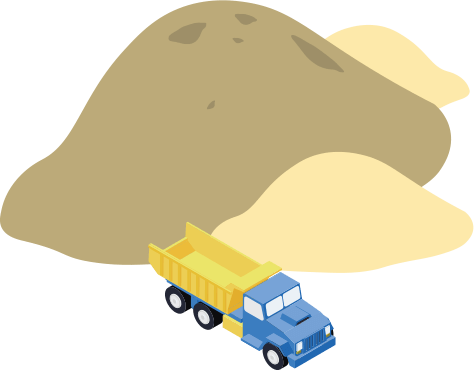A lot of my articles deal with things to worry about.
We’ve just celebrated Thanksgiving.
Let’s give thanks for the marketing opportunities and resources we have. Never before seen in the history of the world, let alone 30 years ago. 30 years ago we didn’t even have the internet.
My nominees for the biggest game changers:
1988 Photoshop
1990 The internet (World Wide Web)
1994 Amazon, eBay and marketplaces
1995 Email (and other electronic communications)
1997 Google (Search)
2000 Google Ads
2003 WordPress and Do-It-Yourself Website Builders
2005 Google Maps (Google My Business)
2007 Smartphones
(You may have additional or different ideas. Let me know. I’m interested!)
PHOTOSHOP
Once upon a time design was slow and changes painful. Photoshop was a huge breakthrough. Along with other Adobe tools, notably Illustrator and InDesign, it has enormously sped up many design tasks and made things easy which previously graphic artists could only dream of.
Thank Photoshop the next time you ask for a minor change in a design, and you don’t have to wait a week to review.
THE INTERNET
Just think of all the things that used to be hard, in the days before the internet. It has made the transmission of information enormously faster and easier. And if marketing isn’t about communication, it is about nothing.
In the prehistoric era of 100 years ago, Claude C Hopkins would write an ad. A month or so later, it would appear in a magazine. Over the next weeks, people would clip the ads out of the magazines and send in to purchase what he was selling.
Another month or two and he could try another version of the ad to see if it would work better.
That whole cycle takes place now in days to at most weeks.
It’s also enormously less expensive. Once, international or even national sales were exclusively for big companies. Now anyone can sell to the whole world. As a result, even the smallest niche can provide a livelihood.
The internet had its early origins as early as 1969, but it was nothing like the commercial tool it is today. Let’s date the true beginning of the internet from the creation of the World Wide Web in 1990.
AMAZON, EBAY AND THE RISE OF MARKETPLACE WEBSITES
The word “marketing” comes from “market” and a market was originally a place where buyers and sellers met. So the original and still basic concept of marketing, is to get buyers and sellers together “in one place.” A marketplace website is the virtual version of that original market concept. It works for the same reason. Instead of going from shop to shop (or website to website), you can find everything in one place.
The first big marketplace website was eBay, started in 1995, and it remains huge. Amazon was started originally to be the world’s biggest online bookstore (1994). It long since passed that goal, started selling anything and everything. Originally it wasn’t a marketplace but now a large percentage of what they sell is from other vendors.
Amazon is not only one of the world’s largest companies, it dominates eCommerce with just under 50% of all online sales in the U.S. There are many other marketplace sites of all sizes, notably Etsy for the arts and crafts, and Alibaba in China and much of the rest of the world.
As in the original concept, anyone can put their items for sale and not have to worry about getting potential customers there. As in many of these other concepts and technologies, it’s a great leveler. Anyone can be a huge success without a huge marketing budget.
EMAIL AND OTHER ELECTRONIC COMMUNIICATION
Do you remember the days before email and text messaging? Me neither. Once upon a time, in the days of horse-drawn carriages and gaslight streetlamps, marketing communications depended on the phone, fax and the post office. What was originally the only form of mail there was, is now derisively called “snail mail.” (“Snail mail” remains an extremely valuable marketing tool.)
Anyone miss the good old days?
While the first email was sent in 1969, it became a commercial thing in 1995 with the start of AOL, Prodigy and CompuServe.
GOOGLE SEARCH
One of the big reasons ANYONE can compete, even on a national or international basis.
Google is in the business of delivering to people what they are looking for.
Started in 1997, it became the top search engine around 2003 and in recent years its share of all searches has approached 90%. That is because of their relentless devotion to doing a better job than anyone else.
So when someone does a search, the results they get are most likely to be what they are looking for. That’s their business model, why people trust them, and why they make tons of money.
So Google doesn’t care how big your company is. Just how good your information is.
Think about how different that is from the old days. For one thing, comparison shopping is in a golden age. Many search engines pre-dated Google, but it took Google’s many innovations to make it the ubiquitous tool it is today.
GOOGLE ADS
Like Google Search, Google Ads has democratized an entire huge portion of the marketing world: Advertising. If you can afford the clicks, you can get the visitors to your site.
The economics of this have little to do with the size of your company, and you don’t necessarily have to have a large budget to make it work for you.
The only comparable form of advertising in the past was small classified ads in newspapers and magazines. But they were S-L-O-W (take weeks to months for your ad to appear) and, except for trade magazines, couldn’t be targeted precisely as Google Ads can.
As with other items, Google Ads isn’t the only game in town. There are Facebook ads, Bing ads and many more. But Google dominates.
WORDPRESS AND DO-IT-YOURSELF WEBSITE BUILDERS
The construction of websites has changed radically over the years. In the early days (around 1997) it was all hand coded. Anyone and everyone was hanging out a shingle and declaring themselves a website expert. The results were usually awful.
Soon, tools were developed to make website building easier. But rapid technology changes (such as the rise of smartphones) presented a challenge. Websites could rapidly become obsolete.
To this day, there is still a scarcity of competent website professionals. Yet every business needs a website that at least looks okay, is appropriate for the nature of their business, and works.
Two solutions have improved this scene greatly.
WordPress, first developed in 2003, has greatly evolved to become the dominant platform for building websites to a point where an estimated 25% of all websites in the world are now in WordPress.
It still takes someone who knows their stuff to build a good site in WordPress. But in the hands of someone competent, it is faster, easier, and less expensive. The result: a website that looks good, does almost anything you want, and will continue to work right.
Do-it-yourself websites have also been around a long time. A way to get a website up yourself, without having to be an expert, and rapidly. In the early days the resulting websites were often horrible looking and didn’t work well. These days, the likes of Shopify (for stores), Wix and Squarespace make it possible for anyone to rapidly get a decent looking site online themselves, and at a minimal cost.
GOOGLE MAPS (GOOGLE MY BUSINESS)
I used to live in Los Angeles. There was something called a “Thomas Guide” which was a spiral bound paper book of road maps. If you were going to find your way around the area, you had to have one. Otherwise you were left with people giving you directions like “take the 405 to the 270 to the 110 and exit at La Cienega, then….” God help you if you made a wrong turn or missed an exit.
Thomas Guide still exists. Barely. Replaced by GPS and huge databases. Now your customers are getting voice directions to find your store easily.
Moreover they already FOUND your store through an online search. “Exotic fish near me” lets your potential customers discover you when they would never have in the past. Then seamlessly get voice directions to find you.
MapQuest used to dominate online mapping, dating from 1996. It took Google Maps to turn the concept into a combination of the true online version of the Yellow Pages, plus seamlessly online direction finding.
SMARTPHONES
Has any technology so dramatically affected life as smartphones? While the first smartphone was actually built in 1992, it is amazing to realize the first commercial smartphone, the iPhone, only dates from 2007 – just 12 years ago. You’re probably reading this newsletter on your phone. Need I say more?
There you have it – my version of technology to be thankful for. It is amazing to think the oldest of these is only 31 years old. The newest isn’t even a teenager. They’ve surely transformed not just marketing but the world.









